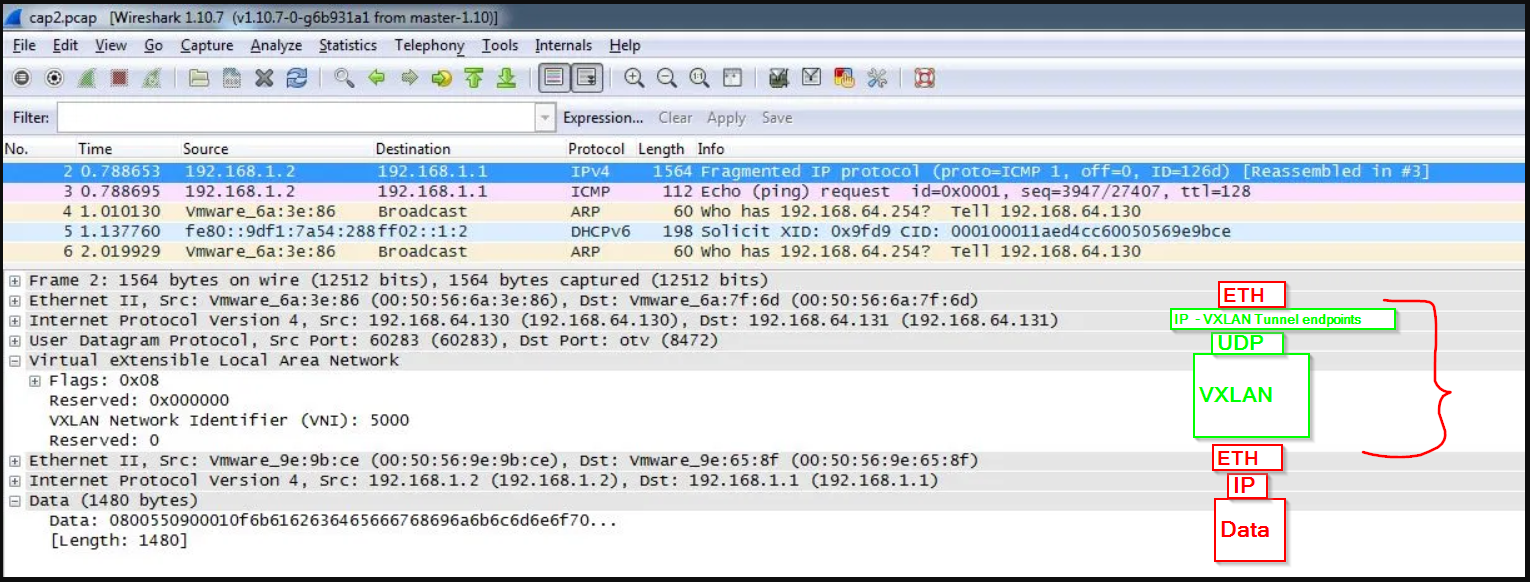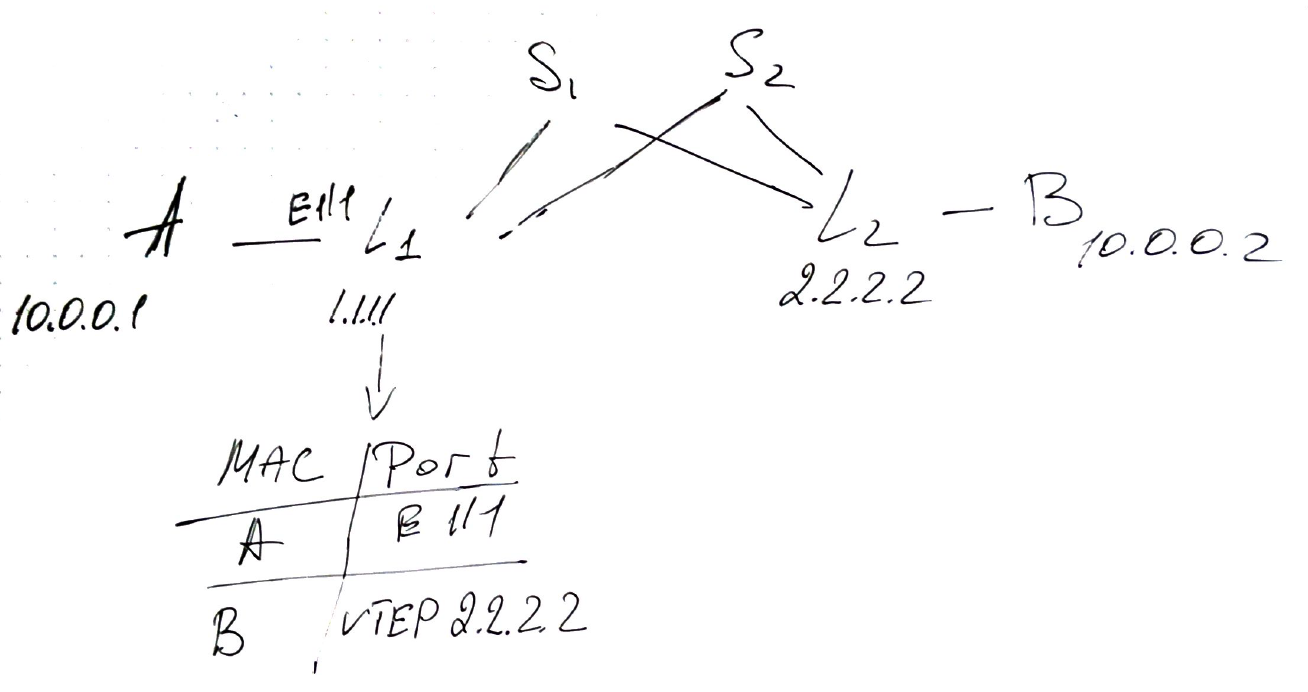VXLAN is a tunneling protocol that encapsulates Layer 2 Ethernet frames in Layer 3 UDP packets.
Why VXLAN:
- VLAN Scalability - expands VLAN name space
- VLANs use 12 bit -4096 values
- VXLAN uses 24 bit - 16777216 values
- allows layer 2 multipathing
- no STP
- uses layer 3 ECMP over CLOS fabric (like FabricPath)
- allows for multi-tenancy
- separate of customer traffic over shared underlay fabric
- allows for overlapping layer 2 and layer 3 addresses (VLANs and IP are locally significant - could be VLAN 10 in one DC and VLAN20 in another DC, as long as the same subnet and VXLAN)

- CE - only one port is active
- vPC - can not scale out, only 2 distribution switches
- FabricPath - L2 only and there is no active control plane (legacy now, because of VXLAN)
- VXLAN - optimize the control plane (don’t send broadcast everywhere, not learning every possible MAC addresses)
VXLAN Terminology
- Underlay Network - provides transport for VXLAN
- OSPF/EIGRP/IS-IS router fabric
- Overlay Network - uses the service provided by VXLAN
- VXLAN - Virtual eXtensivle LAN
- VNI / VNID - VXLAN Network Identifier (replaces the VLAN ID)
- VTEP - VXLAN Tunnel End Point
- box that performs VXLAN encap/decap
- hardware or software (Nexus 5600, N7K-M3, Nexus 1000v)
- VXLAN Segment - the resulting L2 overlay network
- VXLAN Gateway - device that forwars traffic between VXLANs
- NVE - Network Virtualization Edge
- logical representation of the VTEP
- NVE is the tunnel interface
VXLAN Encapsulation

- VXLAN over UDP over IP
Basic VXLAN Workflow
- Receive ARP from local host
- Find the remote VTEP
- multicast flood and learn
- ingress replication
- MP-BGP L2VPN EVPN
- Unicast encap frame to the VTEP
- throw away the VLAN
- replace it with the VNID
